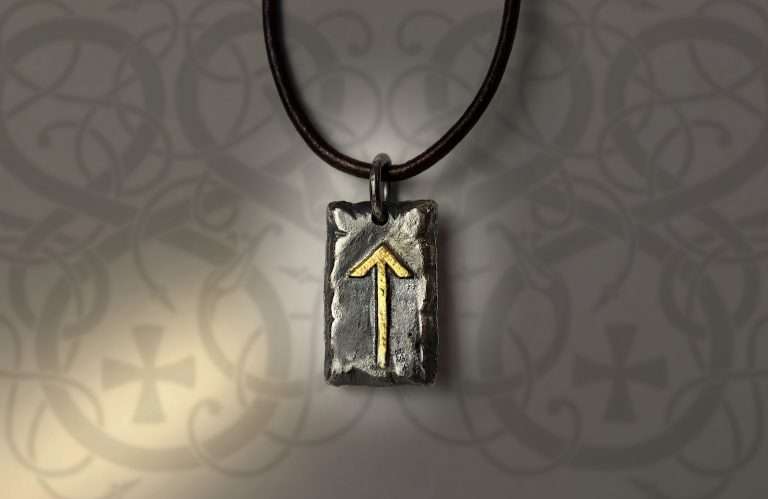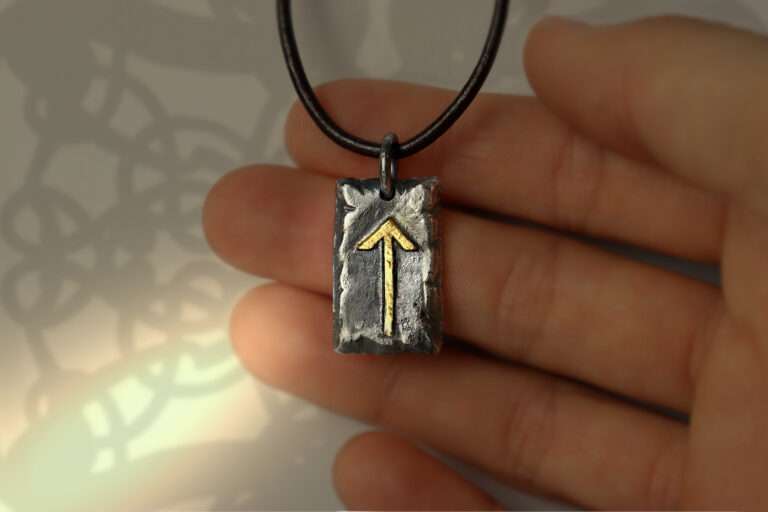Týr


Týr in old Norse, representing the viking rune letter T or D, and tiwaz/teiwaz in proto-Germanic elder futhark is named after the god Tyr. The “long-branch” rune, mainly found in Denmark, is similar to an upwards-pointing arrow. The “short-branch” rune, mostly found in Sweden and Norway, is similar to the long-branch, but with only the left-hand part of the arrow point.
Sá er enn áss, er Týr heitir.
Hann er djarfastr ok bezt hugaðr, ok hann ræðr mjök sigri í orrostum.
Á hann er gott at heita hreystimönnum.There is another Aas, called Tyr.
He is very bold and brave, and he decides over victory in war.
Warriors should invoke him.
Týr is the Norse god of war and justice, embodies principles of courage, sacrifice, and the lawful order of the cosmos. Týr was an important deity in Norse mythology, so significant as to have his own day – Tuesday, from Tiwesdæg, meaning Tiw’s day, the old English name for Tyr. In current Nordic languages this also holds true. For example Tirsdag in Norwegian or Danish and Tisdag in Swedish all derive from the old Norse tysdagr.
As the quote above attests to, warriors should invoke Týr, who sacrificed his hand to bind the Fenrir, a symbol of the bravery required to uphold order and righteousness. Týr therefore represents not only martial valor but also the willingness to make personal sacrifices for the greater good, embodying a complex blend of justice, honor, and leadership.
Týr serves as a potent reminder of the values of courage, integrity, and the importance of making difficult choices for the sake of justice. It encourages us to face our fears and challenges with bravery and to stand up for what is right, even at a personal cost.
By embracing the spirit of Týr, we can draw upon ancient wisdom to navigate the complexities of modern life, enhancing our spiritual resilience and commitment to ethical action.


